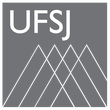Banca de DEFESA: BÁRBARA RODRIGUES NASCIMENTO
Uma banca de DEFESA de DOUTORADO foi cadastrada pelo programa.STUDENT : BÁRBARA RODRIGUES NASCIMENTO
DATE: 21/09/2021
TIME: 09:00
LOCAL: videoconferencia meet.google
TITLE: Temporal evaluation of the effects of vitrification with subsequent ectopic
autologous transplantation on murine ovarian morphophysiology
KEY WORDS:
Fertility preservation; ovary; glazing; autotransplantation; folliculogenesis;
estrous cycle
PAGES: 123
BIG AREA: Multidisciplinar
AREA: Interdisciplinar
SUMMARY:
The vitrification of ovarian tissue followed by transplantation is a promising alternative for the
conservation of genetic material from endangered species, wild, domestic or of high
zootechnical value; as well as a conservation alternative before cancer treatment, allowing the
storage of a large number of follicles and preserving fertility. The main challenge for ovarian
graft longevity is the substantial loss of follicles during the post-transplant ischemic period.
Therefore, the objective of our work was temporally investigate the effects of vitrification and
autotransplantation in the murine ovarian ectopic morphophysiology. Female mice of the
C57B1/6J lineage, adult at 6 weeks of age in the proestrus cycle phase, were randomly divided
into control and vitrified treatments (n=79) and untransplanted (0d) or recovered 1, 12 or 23
days were evaluated post-transplant (1, 12, 23d). The ectopic autologous transplant was
performed to the dorsal subcutaneous region of the animal's forelimbs. After the transplant, the
animals' estrous cycle was monitored through vaginal cytology. At the end of each treatment
period, the ovaries were collected. Both treatments (control and vitrified) of grafts in 1d had a
higher number of atresic follicles (p<0,0001), but an even higher rate of atresia was observed
in the treatment vitrified in 1d (p<0,01). However, this number was attenuated by 12 and 23d
(p<0,0001). The follicular activation rate was higher in ovaries vitrified in 1d (p<0,01) and
significantly reduced in ovaries vitrified in 23d (p<0,05). The duration of the estrous cycle of
both treatments was similar (p>0,05) and all females moved through all stages of the cycle. A
reduction in oocyte and primary follicle diameter of vitrified ovaries was observed at 0d
(p<0,01; p<0,001). In addition, at the end of 23 days, all animals in both treatments had their
ovarian endocrine function fully reestablished and cycle duration was similar for all treatments
(p>0,05). Blood perfusion at the transplant site was similar for both treatments (p>0,05). In 1d,
the Bax and Casp3 genes were differentially expressed, both compared to the 0d control. Such
treatments were also the ones that qualitatively showed more positive TUNEL cells. For both
1d treatments, genes Acvr1, Egfr and Lhcgr were down-regulated and Fshr and Igf1r genes
were up-regulated, both in relation to the 0d control (p<0,05). Only the Jag1 gene was
differentially regulated between the 1d treatments compared to the 0d control. However, when comparing vitrified and control ovaries, both 1d, the genes Acvr1, Egfr, Fshr, Igf1r, Jag1 and
Casp3 are down-regulated (p<0,05). In summary, our findings demonstrate that the period
immediately after transplantation is critical for graft establishment due to the high rate of
atresia. However, this loss is compensated with a higher rate of follicle activation and a decrease
in the rate of atresia after establishing the graft at the transplant site. Furthermore, all animals
returned their cyclicity, which demonstrates that vitrification does not affect ovarian endocrine
function. Despite some changes in the expression of genes related to follicular survival in the
first days post-transplantation, ovarian grafts were able to support folliculogenesis. Thus,
vitrification with subsequent ectopic autologous transplantation seems to be a promising
technique for the preservation of fertility.
BANKING MEMBERS:
Externa ao Programa - 1715414 - ANA PAULA MADUREIRA
Externa à Instituição - FERNANDA RADICCHI CAMPOS LOBATO DE ALMEIDA
Externo à Instituição - JOAO HENRIQUE MOREIRA VIANA
Interno - 036.176.496-02 - LUIZ GUSTAVO RIBEIRO PEREIRA - UFMG
Presidente - 2141553 - PAULO HENRIQUE DE ALMEIDA CAMPOS JUNIOR




